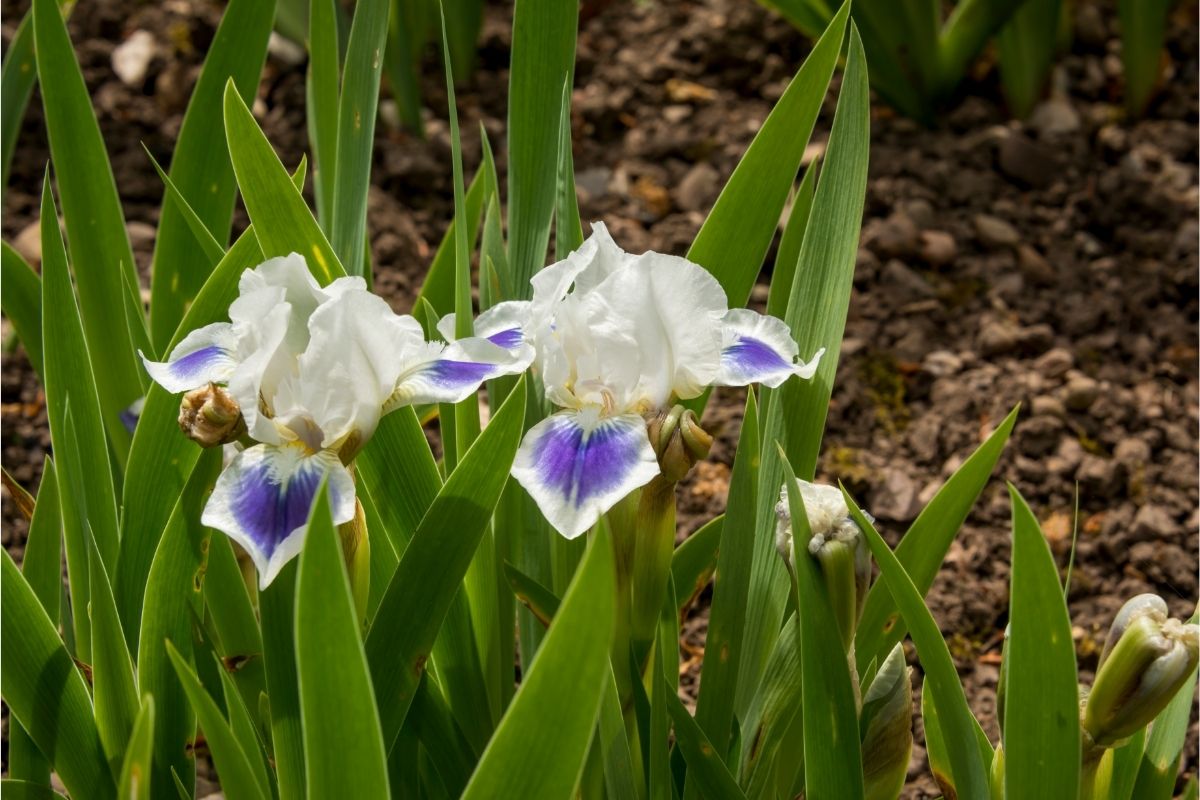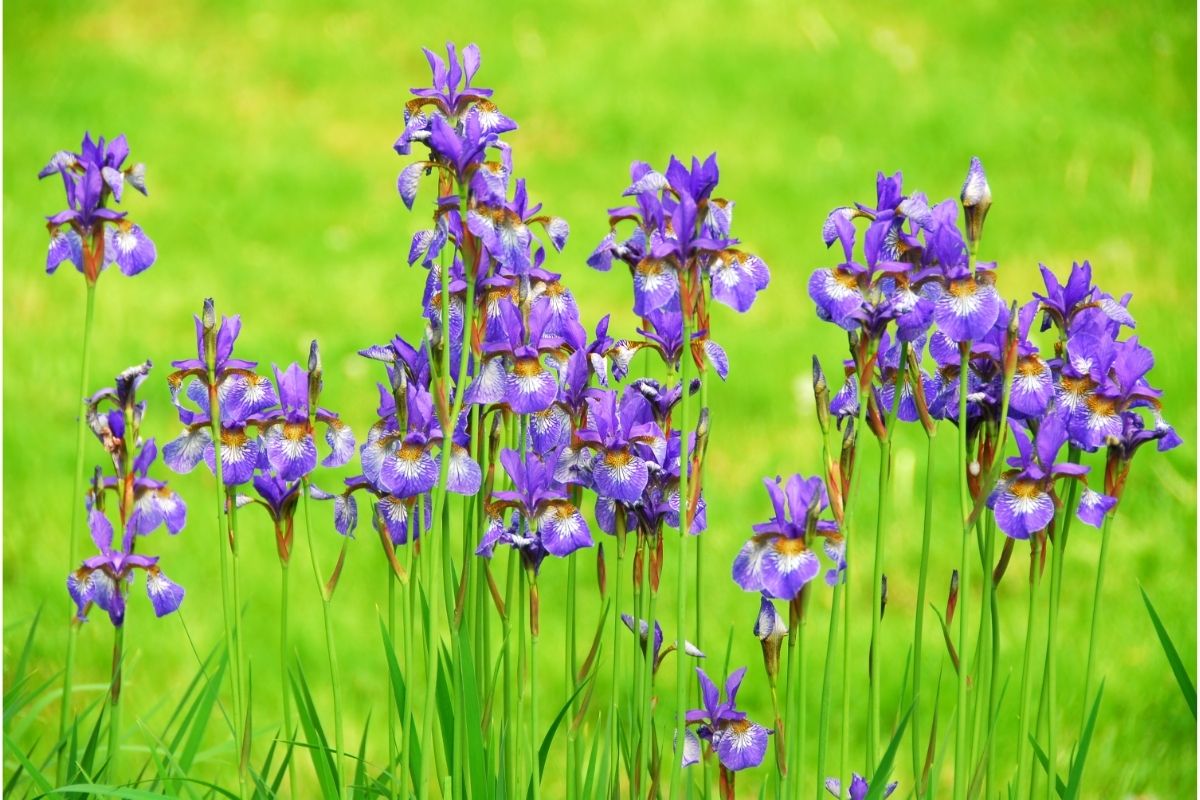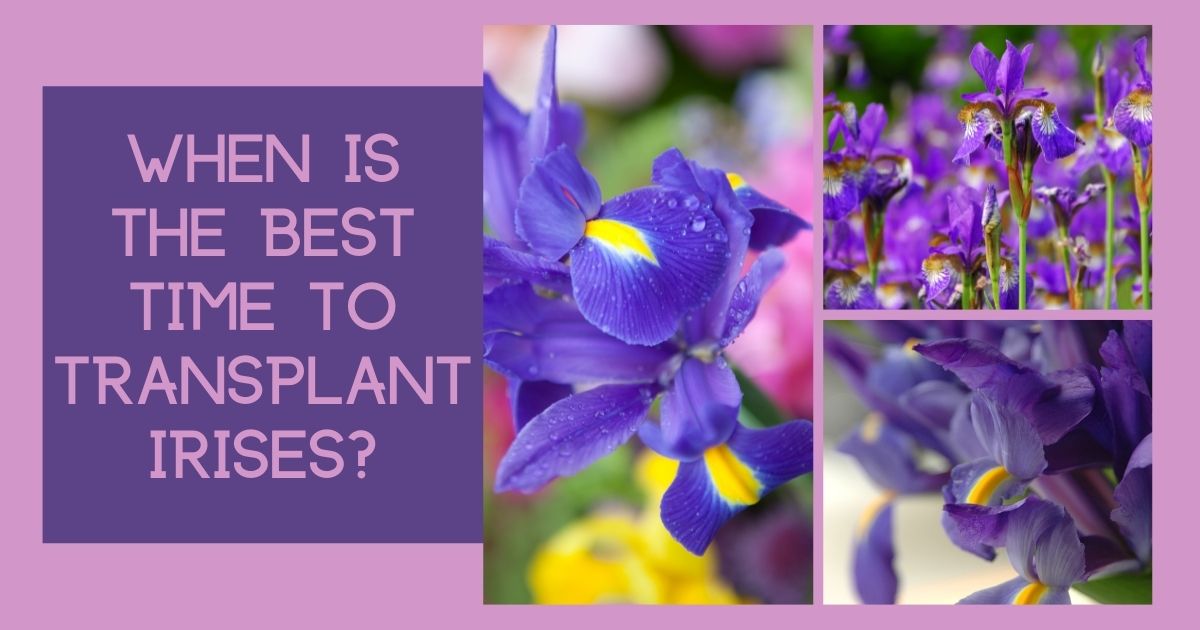Are you wondering, “when is the best time to transplant Irises?” Some people say it’s when they start blooming, and others swear by the leaves wilting. Still, others let nature take its course. However, when is the best time for replanting iris bulbs?
If you’re wondering when to plant your irises, we’ve got some helpful tips for you. So read on and find out all there is to know about the best time is to transplant irises. It’s going to be fun!

Do Irises Multiply?
Irises are known for their beautiful blooms, and they can also be easy to grow if you know how to. The first thing anyone interested in growing irises should learn about is the different varieties available. Some of these blooms once a year; others will bloom again after their foliage dies back (although it makes some people who love their irises sad when they do!).
If you’ve decided to grow iris, the next question (after what colors and types you’d like) is whether or not your irises will multiply! This does depend on the kind of iris, but most varieties grow in clumps. After several years, these clumps may be crowded and need dividing.
When to Transplant Iris
As a rule of thumb, you should divide your irises every 3-4 years if the clumps are large enough that it’s difficult to see individual plants. However, if there are many small fans with just one stalk each, they can probably go another couple of years before being divided.
When Is the Best Time to Transplant Irises?
Every gardener has to consider the best time to transplant irises. Some think it’s early spring; others believe fall is the best choice. There isn’t a “wrong” or “right” decision to make when you choose a planting period because each one has its benefits and requires a different amount of maintenance afterward.
Here are some things to consider when deciding on the best time to transplant irises:
Know What Kind of Iris You Have
Irises fall into three categories:
- Bearded Irises
- Tall Beardless Irises
- Louisiana Irises
So before choosing when to plant your irises, you need to understand which kind you have.
Bearded Irises
These irises feature flowers that are taller than the foliage on their stalks. They bloom in early spring and don’t require much maintenance after planting.

Tall Beardless Irises
These irises stand above the foliage that is in their pot. When planted en masse, they make for a striking garden display, but they require regular deadheading (removal of spent blooms), or they get old quickly and stop blooming.

Louisiana Irises
These irises feature tall stalks with flowers on top of the stem. They grow very tall, so they’re best planted alongside other irises for company. Planting in early spring gives the Louisiana Irises time to establish roots before summer arrives.
However, the optimum moment to transplant irises is usually late summer to early fall. The bloom of the iris must have been sufficient during this time. Transplant your irises when the temperature rises above 40 and 50 degrees Fahrenheit (4.4 and 10 degrees Celsius) or more.
Iris plants are challenging to grow, so it’s best to transplant them when the weather is still warm. However, if you transplanted your iris plant in the spring, you should expect to see some blooming before winter arrives.
Replanting Iris Bulbs – The Signs
Irises come in a large variety of colors and types, and they’re all quite pretty – the only problem with irises is that once you plant them, they’ll take several years before they flower again. That means if you want to enjoy the bright purple flowers of your iris plant, you need to replant it every few years.
Here are the signs that your iris bulbs need transplanting:
The Plant Is Crowded and Spindly
Your iris plant is overcrowded and spindly if it has grown very tall, without producing many flowers. Overcrowding makes for a weak plant, whereas an overcrowded one doesn’t get enough sunlight. Transplanting your iris plant to a new spot will help it grow stronger and produce more flowers.
The Bulbs Are Packed Closely Together
Iris bulbs are usually between 3-4 inches (7.6-10.2 centimeters) apart, barely touching each other. If they’re packed much closer than that, they’ll drain too much energy from the plant. Bulbs that are too close together also increase the odds of disease.
The Plant Is Sectioned
Irises produce offsets, or “baby” plants, near the base of their crowns. When you replant your iris plant, you can separate it into those baby plants and replant them in new places. Irises will multiply fast, eventually crowding out their parents if you don’t separate them.
Your Plant Is Weeping
Iris flowers fall over after they bloom, leaving behind bare stems and looking like tiny icicles hanging down from the base of the plant. If this happens, it means your iris has died after blooming. Replanting the dead iris will give your garden a burst of color when its babies bloom.
The Plant Is Yellow or Brown
If most of the leaves on your iris plant are yellow or brown, they’re too old and need to be replaced with new leaves. If you don’t replant your iris, it will eventually die.
The Plant Is Lopsided
If your iris plant has one side that’s higher than the other, replanting it to a new spot will level everything out so you can have a balanced garden. The taller side of the iris draws more nutrients from its crown, making the whole plant uneven. Also, replanting it will make your garden seem more aesthetically pleasing.
Steps for Dividing Irises
Irises are some of the easiest flowers to propagate. They proliferate, they divide easily, and the division often results in blooms the following season.
Dividing irises can be done at any time of year, but mid-summer is best because you’re guaranteed blooms for years to come after replanting iris bulbs.
When to Divide Irises
Generally, irises should be divided every 3-4 years. If you’re away for many months of the year or if your plants are not as healthy as they could be, divide them more frequently. Splitting in the fall is advantageous because your plant won’t develop roots before the winter.
In spring, you can divide irises for a quick blooming fix, but they’ll have to develop roots before blooms appear the following summer.
How to Divide Irises
Irises grow from underground corms or rhizomes. Each iris plant has between 1-5, depending on the species and cultivar. To divide irises, you’ll need a shovel or spade, hand pruners, and a bucket. The only consideration is that the plant pieces must be big enough for replanting.
Lift the iris from the ground before blooms develop. Do not damage the rhizomes. Cut off any broken or dead parts leaving only healthy plant pieces with leaves still attached. If the leaves are yellowed, it’s okay.
Place the iris plants in a bucket of water, shake to remove excess soil, and replant immediately. It’s best to keep newly divided irises out of direct sunlight for several hours. The leaves can burn, and the iris may not survive.
FAQs on Transplanting Iris
Can I Leave Iris Bulbs in the Ground?
The iris bulbs can stay in the soil for up to three years, but if you discover them at a nursery before then, it is preferable to plant them right away rather than allowing them to freeze or mold. Storing your iris bulbs in a cool, dark location, such as in your garage, can also assist in keeping them from drying out.
What Is the Best fertilizer for Irises?
An excellent fertilizer for irises contains the three numbers listed below. The first number refers to nitrogen, the second relates to phosphate, and the third refers to potash: N 46 P2O5 K2O.
Do Irises Like Full Sun or Shade?
Irises prefer partial to full sun.
What Is the Best Soil for Irises?
Irises thrive in many different soil types, including well-drained and light dirt. Peat moss, cedar bark, pine needles, leaf mold, loam, composted manure, or wood chips are all popular soils for irises.
These can be effective as long as you ensure that they are well-drained and provide adequate space for drainage.
Is Epsom Salt Good for Irises?
Epsom salt is good for over-seeding, but it can also be used as a fertilizer. However, be careful not to use too much Epsom salt, as it may cause your irises to experience magnesium toxicity.
In Summary
Transplanting irises can be difficult, but it’s important to remember that they are resilient plants. If you want your irises to thrive, it’s worth taking the time and effort required for proper care. Here are some tips on how to properly transplant them so that they grow into beautiful flowers in no time at all!
Several factors determine when is the best time for transplanting irises. First, you should know that different irises require different conditions for optimal growth. For example, Bearded Irises need more water than other varieties, while Siberian and Japanese Irises prefer drier soil conditions.
Knowing what type of plant you have will help you decide on an appropriate date for planting or replanting your flower bed with new bulbs or rhizomes.
You should also consider where you plan to place these flowers in your garden and their proximity to other plants and trees; this will affect how much sunlight they receive, impacting their health over time if not accounted for properly before planting begins!
Finally, make sure not only do you choose a day with good weather but also one without any strong winds or heavy rainstorms since both of these elements could damage newly planted roots if left unprotected from Mother Nature’s wrath! With careful planning and consideration about each factor involved in growing healthy flowers like these beautiful irises.
